
For thousands of years, sausage has been a popular meat product across a wide range of cuisines. Who can resist the smell of sausage sizzling on the skillet for breakfast or the taste of meat smoked and seasoned to perfection? Even if you consider yourself a sausage enthusiast, you may not realize just how many types of sausage there are. We’re going to cover 25 of the world’s most famous varieties of sausage and explain how this world culinary favorite is made.
Types of Sausage
Sausage is a very general term that encompasses nearly endless regional meat products. It consists of ground or minced meat and spices, and some kinds contain added fat or grains, as well. These meats sell in various forms, from fresh, ground sausage to ropes and links.
You’ll notice that, just as France tends to be the star when it comes to cheese guides, Germany is king concerning sausages. That said, the sausages on our list hail from all over the globe, with many of them available right here in the U.S. The kinds of sausages we’re going to cover include:
- Fresh country sausage
- Summer sausage
- Salami
- Pepperoni
- Bologna
- Smoked sausage
- Frankfurter
- Blood sausage
- Andouille
- Chorizo
- Loukaniko
- Italian sausage
- Bratwurst
- Beerwurst
- Bockwurst
- Bauerwurst
- Knackwurst
- Weisswurst
- Thuringer
- Landjaeger
- Kielbasa
- Hungarian sausage
- Head cheese
- Chinese sausage
- Poultry sausage
1. Fresh Country Sausage
Fresh country sausage is also commonly known as breakfast sausage because people often serve it with breakfast. This meat is a popular type of American sausage made from pork and mild seasonings. Country sausage has its origins in rural America, where farmers found delicious ways to make the most of all parts of a butchered hog.
It can come in a few different forms, all of which are raw and require cooking. You can get fresh country sausage as loose sausage meat, in individual links or in longer coils.
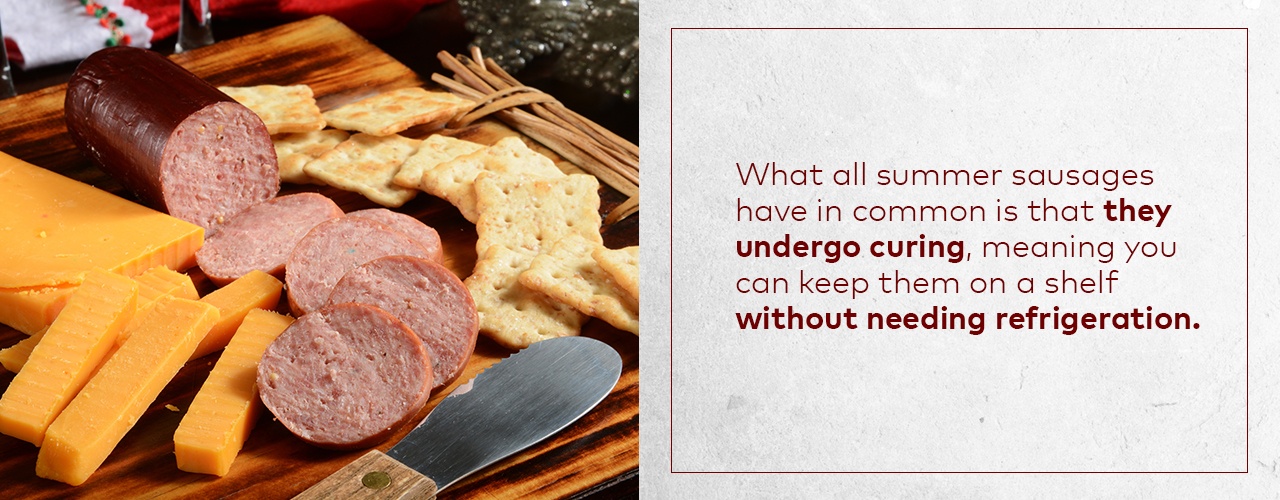
2. Summer Sausage
Summer sausage is another type of American sausage. Americans use the label “summer sausage” to apply to a wide variety of recipes, with most consisting of a combination of pork and beef. What all summer sausages have in common is that they undergo curing, meaning you can keep them on a shelf without needing refrigeration. You can also enjoy them without cooking them.
You can cure summer sausages in different ways, including smoking and drying. Despite the name, this meat tends to be a favorite winter snack.
3. Salami
Another variety of cured sausage that is popular in the U.S is salami, which, like summer sausage, is a general category of sausage. In this case, it refers to fermented, aged sausage. One of the most popular types of salami in the U.S. is Genoa salami, named after the region in Italy where it originated.
This type of salami consists of pork, wine and seasonings. It contains a fair amount of fat, making it soft compared to hard salami. Salami can add a delicious, tangy flavor to cold cut sandwiches.
4. Pepperoni
Pepperoni is a type of salami, and though people tend to think of it as Italian, it is actually an American sausage variety. People make pepperoni from beef, pork or a combination of both. The pepperoni Americans love to use as a pizza topping is typically semi-dry or cooked, and sausage makers cut it into small slices. More traditional varieties of pepperoni are dry.
The kind of pepperoni not intended for pizza is usually larger in diameter and, like other types of salami, can make a flavorful addition to a deli sandwich.
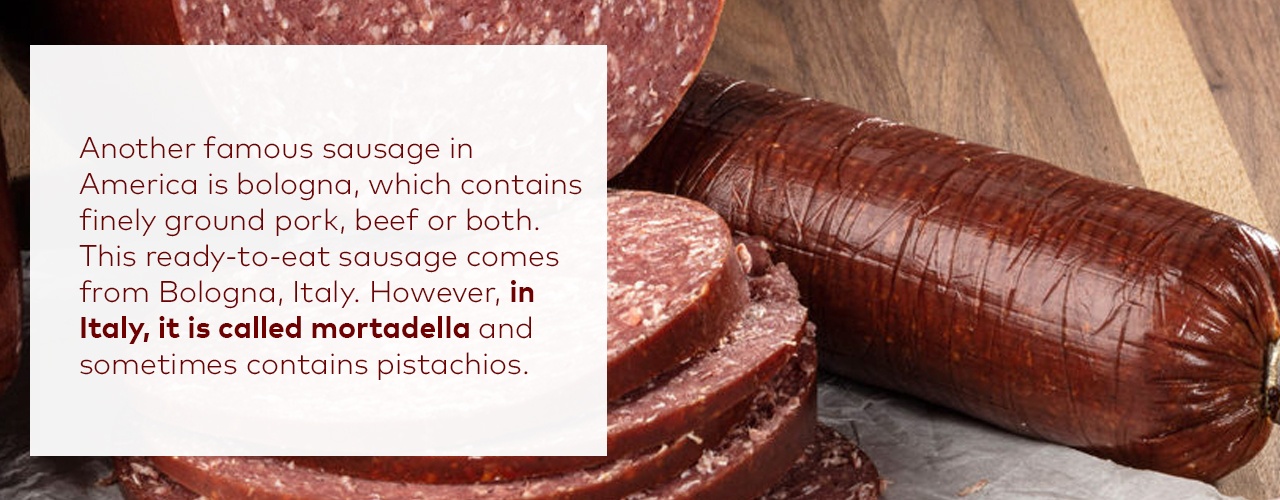
5. Bologna
Another famous sausage in America is bologna, which contains finely ground pork, beef or both. This ready-to-eat sausage comes from Bologna, Italy. However, in Italy, it is called mortadella and sometimes contains pistachios. In the U.S., most people think of bologna as a cheap type of mass-produced lunchmeat, but bologna can be a high-quality, gourmet variety of sausage, as well.
An example is Lebanon bologna, a semi-dry fermented sausage made from beef and a unique combination of spices. You can enjoy several other types of gourmet bologna as a snack or on a sandwich.
6. Smoked Sausage
Technically, any sausage that goes into a smoker as part of its preparation is smoked sausage. But in American grocery stores and delis, you’re likely to see some ropes of meat simply labeled as “smoked sausage.” This mildly seasoned sausage is usually fully cooked before being smoked. Some mass-produced versions may contain artificial smoke for flavor, but traditional varieties of smoked sausage are still hardwood smoked. Slices of smoked sausage are a popular addition to breakfast dishes, potato dishes and bean soups.
7. Frankfurter
Also called wieners or hot dogs, frankfurters are one of America’s favorite sausages. These sausage links typically contain a mixture of pork and beef, though you can also find all-pork and all-beef versions. Frankfurters originally hail from Frankfurt am Main, Germany, but they made their way to the U.S. at the dawn of the 20th century and were an instant hit.
The first hot dog stand, which introduced Americans to frankfurters served in a long bun, opened in 1916 at Coney Island. Frankfurters continue to be a popular summertime food.
8. Blood Sausage
Black sausage is any ground meat containing animal blood as part of the recipe. One of the most famous examples is black pudding, a blood sausage from the United Kingdom and Ireland that people commonly serve with breakfast. Black pudding consists of pig blood, fat and oats or groats.
Sausage makers typically cook this meat before selling it, and it is very dark in color — hence the name. This recipe may not sound appealing to most Americans, but it is hugely popular across the pond.
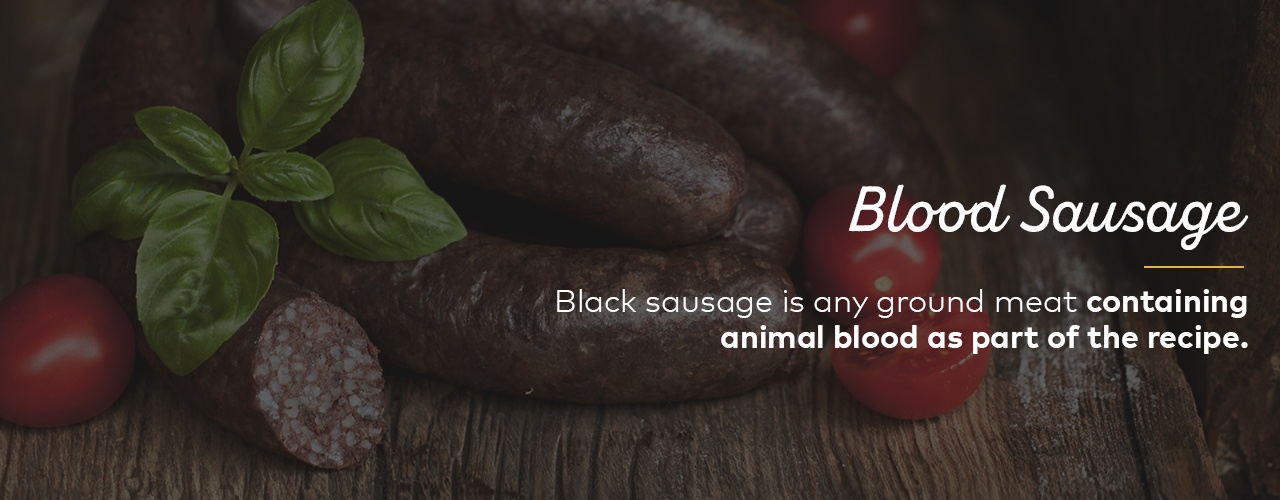
9. Andouille
Andouille is French in origin and is a prized ingredient in Cajun cooking. This sausage contains coarsely ground pork along with wine, garlic, pepper and other seasonings. The ground meat is stuffed into a casing and double smoked. This cooking technique makes andouille a flavorful sausage perfect for dishes like jambalaya and gumbo. It comes in links or in a rope and is typically sliced and sauteed before being added to meals.
10. Chorizo
Chorizo is a popular type of spicy pork sausage used in Spanish and Mexican cooking. The Spanish variety is typically smoked and seasoned with garlic and smoked paprika. Mexican chorizo, on the other hand, is raw and seasoned primarily with chile peppers and vinegar. Spanish and Mexican chorizo are not interchangeable, but both are deliciously flavorful and work well in Latin dishes.
One of the most popular chorizo dishes is chorizo and eggs. In the U.S., you usually find this meat in a ready-to-eat form, either dry or semi-dry.

11. Loukaniko
Loukaniko is the Greek word for sausage. The Greeks’ signature sausage includes pork and lamb. It gets its signature flavor from orange zest, along with seasonings like garlic and cumin. You can prepare loukaniko in various ways, so you may find it sold as fresh, semi-dry, cured or smoked.
Depending on how you prepare this ground meat, it may resemble salami or raw link sausage. Loukaniko pairs well with Greek dishes, but you can also grill the links and enjoy them just as you would a frankfurter or bratwurst.

12. Italian Sausage
Italy is home to various sausage types, so the term Italian sausage, or salsicca, is relatively broad. Italian sausage is usually sold fresh, either as loose meat or in casings. It traditionally consists of pork and seasonings like fennel, garlic, anise seeds and other spices. In the U.S., you can find mild varieties of Italian sausage — which have a sweeter taste — and spicy types, which contain red pepper flakes for heat and added flavor. You can grill Italian sausage in individual links and serve them on a bun.
13. Bratwurst
The term bratwurst is a generic name for German sausage, which includes seasonings like black and white pepper, mace, rosemary, coriander and nutmeg. In Old High German, brät refers to finely chopped meat, and wurst means sausage, which is why you’ll see many of the following sausage types end in “-wurst.” Most often, bratwurst contains pork and sells in links. Americans commonly refer to the individual links as brats, and they grill and serve them like frankfurters. Bratwurst is also great with sauerkraut or potatoes.
14. Beerwurst
Beerwurst — also spelled bierwurst — is a type of Bavarian sausage used as sandwich meat. It is not very common in the U.S. Beerwurst doesn’t contain any beer, but people often pair it with beer as a snack. This deli-style sausage consists of pork, beef and a generous amount of garlic, which contributes to its distinctive flavor. Beerwurst is cooked and smoked, so it is ready to eat. Deli chefs slice it from a large cylinder rather than put it into individual links.
15. Bockwurst
Bockwurst is another popular type of German sausage. Bockwurst is especially prevalent in southeastern Pennsylvania, where German culinary traditions influence the local cuisine. Bockwurst is typically sold raw in links. This sausage includes pork, veal, mild seasonings and fragrant herbs, making it a type of meat that goes well in numerous dishes. Some examples include boiled cabbage and potatoes or breakfast skillet dishes. Bockwurst is also delicious on its own with a condiment like catsup.

16. Bauerwurst
Bauerwurst is also called bauernwurst, or “farmer’s sausage” in German. It is a coarse-textured beef and pork sausage, full of multiple seasonings, such as garlic, marjoram, mustard seed and onion. It is smoked, which contributes to its flavor. Bauerwurst sells in thick links or ropes. Since it is cured, it is safe to eat, but most people heat it, as you would with American-style smoked sausage before serving it in traditional German dishes.
17. Knockwurst
Next in the German section of this list is knockwurst, also spelled knackwurst, which comes from north Germany. It usually contains beef or veal, pork or a combination of these meats. Garlic is the dominant flavor. Knockwurst is traditionally stuffed into natural casings, making them short, plump sausages. The name comes from the German word “knack,” which translates to “snap,” the sound you’ll hear when you bite into one of these meats. Knockwurst is best served grilled and goes very well with sauerkraut.
18. Weisswurst
Weisswurst is also called white sausage for its pale, grayish-white appearance. This traditional Bavarian meat may look strange, but it is delicious. It includes pork and veal along with bright-tasting additions like lemon, ginger, parsley and more. Cooks traditionally stuff the sausage into thick natural pork casings. This mild meat is a favorite mid-morning snack in Germany and features on many Oktoberfest menus, alongside bread, sweet Bavarian mustard and beer.
19. Thuringer
Thuringer sausage comes from Thuringia, a state in east-central Germany. The most famous Thuringian meat is known as thüringer rostbratwurst. It consists of pork mixed with some beef or veal and flavorings like garlic, marjoram, caraway and cumin. The oldest recipe for it dates back to the 15th century. The mixture goes into long, narrow casings and may be smoked or sold fresh. Thuringer is generally best prepared through grilling.
20. Landjaeger
Landjaeger, or landjäger, is a type of semi-dry, fermented German sausage that is a favorite snack in Pennsylvania Dutch country. It is also known as hunter’s sausage because it is a ready-to-eat source of protein for hunters, hikers and other outdoors people — no refrigeration needed. For this reason, it has historically been a useful source of food for soldiers. Landjaeger sausages come as small baton shapes, making them ideal as individual portions.
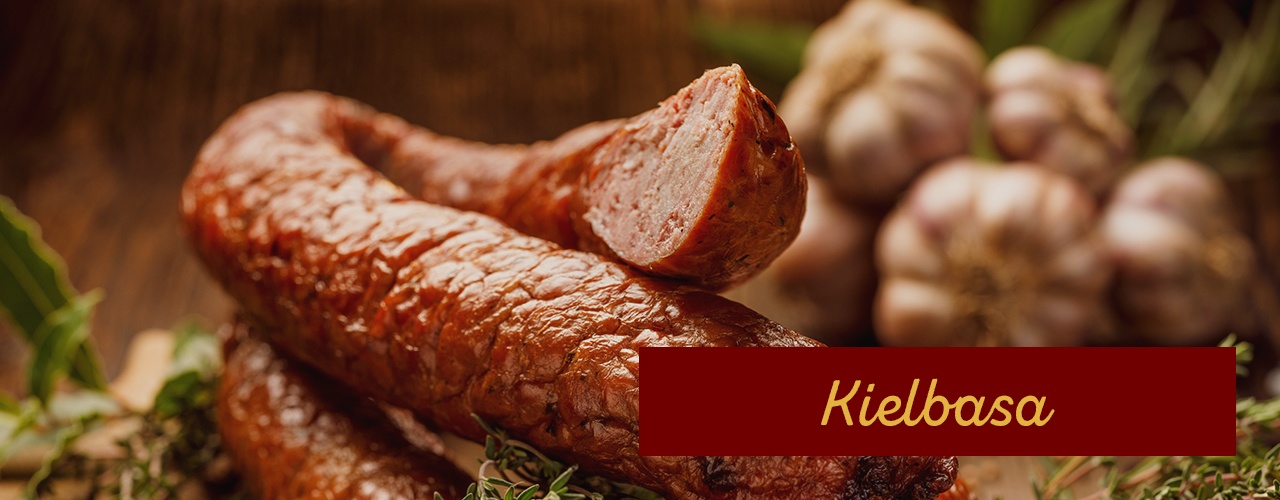
21. Kielbasa
Kielbasa is the Polish word for sausage, so any type of Polish sausage is a kielbasa. The signature kielbasa we know and love in the U.S., which people refer to as Polish sausage, is a ready-to-eat sausage that comes in a signature U-shape. It consists of coarsely ground pork, garlic and other seasonings. Americans often smoke their Polish-style sausage, which adds to the flavor. Kielbasa sliced and sauteed works well in the same dishes as different varieties of smoked sausage, including rice, beans, potatoes, pasta, soups and more.
22. Hungarian Sausage
As with the broad term “Polish sausage,” Hungarian sausage refers to any sausage from Hungary. This meat contains pork, garlic and paprika primarily. It can also include seasonings like black and white pepper, marjoram, caraway and more. Some varieties even contain white wine or cognac. Hungarian sausage is known for its elongated shape. People sell it fresh, smoked or dried. If you ever get to try Hungarian sausage, try making stew.
23. Head Cheese
Head cheese may win the award for the oddest-named meat, but it makes more sense when you understand where this type of sausage originates. The coarsely cut meat comes from the heads of livestock, usually calves or pigs. People call it “cheese” because it forms a jelly or loaf-like product. Chefs place the mixture into a mold and cook it, and then it is ready for slicing and eating. Head cheese comes from Europe and is not as popular here in the U.S.
24. Chinese Sausage
The vast majority of the world’s sausages are European, but Asian cooking often uses ground pork to create sausages as well. Chinese sausage refers to any sausage originating from China, and it is ordinarily a sweetened, salted and smoked dry pork version. It may contain ingredients like soy sauce, rice wine and rose water. Chinese sausage is tasty on its own, though it makes a flavorful addition to stir-fry and other Chinese dishes.
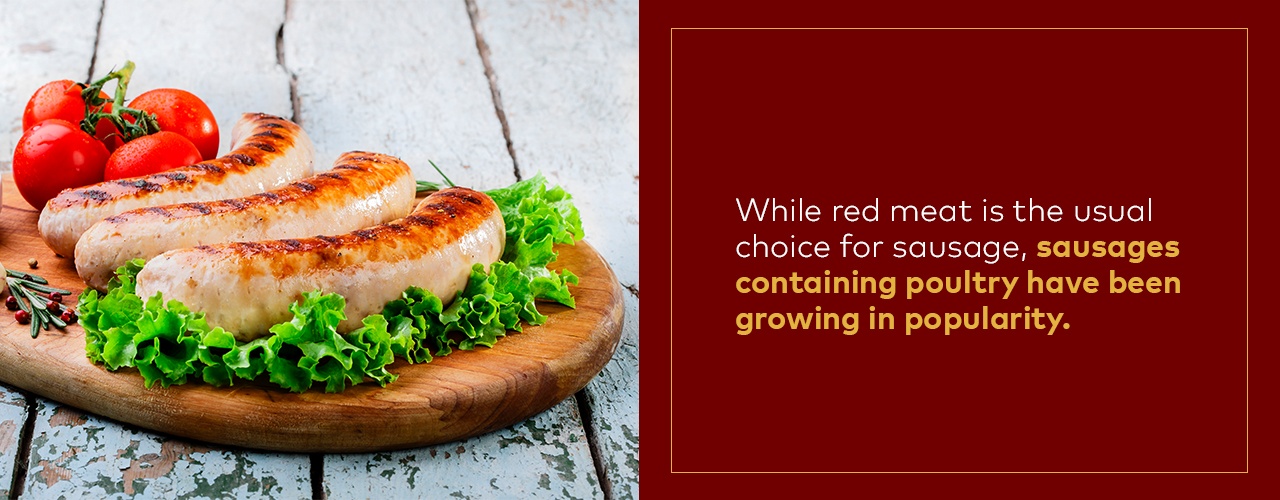
25. Poultry Sausage
While red meat is the usual choice for sausage, sausages containing poultry have been growing in popularity. Companies often market these products as leaner alternatives to traditional forms of sausage. For example, a light menu at a breakfast restaurant might substitute typical American breakfast sausage with turkey patties or links. These sausages can be delicious in their own right, though. For example, maple apple sausage grillers make for a mouth-watering breakfast treat.
How Is Sausage Made?
As we’ve seen, there are many kinds of sausage, so the recipe for how to make it is primarily dependant on the variety in question. The essential steps for how people create most sausage types are as follows:
- Step 1: First, the sausage maker grinds or minces the meat and mixes it until it reaches the right consistency. Pork is the most popular meat of choice, though cooks often mix it with beef or veal.
- Step 2: Then, the seasonings go in, and the sausage mixture rests overnight — or long enough for the flavors to combine. Any sausage sold fresh as loose, ground meat would be ready at this point, but for encased sausage, another step remains.
- Step 3: The mixture goes into a machine that feeds it through a spout. The casings, whether natural or artificial, are bunched up over the spout. As the sausage comes through, it fills the casing.
- Step 4: Once the whole casing is full, it may remain in a rope, or the sausage maker may pinch it at evenly spaced intervals and spin the sausage to create closed-off places. The maker can then cut these seams to form individual links.
- Step 5: For some sausages, the next step is cooking, smoking or both. Smoking sausage can add flavor as well as preserve it and make it ready-to-eat. Other sausages may be hung to dry-age, another process that affects the taste and preserves the meat.
There are multiple styles or levels of preparation you’ll find among different types of sausages. It’s helpful to understand the difference between these classifications:
- Fresh sausage: Fresh sausage is raw. Stores may sell it in ropes, links or a loose ground mixture. You must cook this type before consuming it. Link sausage typically does best when boiled and then seared or grilled to brown the outside.
- Cooked sausage: This sausage consists of cooked fresh meat, so it is ready to eat when you purchase it. A typical example is hot dogs. You must refrigerate these meats to keep them fresh until you eat them.
- Smoked sausage: Smoked sausage is either slow smoked or cooked and then smoked. This sausage is ready to eat, but most varieties require refrigeration.
- Semi-dry sausage: As the name suggests, semi-dry varieties are partially dried. This process occurs while the sausages are being smoked, which also thoroughly cooks them. Semi-dry sausages are often shelf-stable.
- Dried sausage: Fully dry sausage is aged and cured, making it ready to eat without any need for refrigeration. People typically enjoy them as a snack or as part of a meal. You can eat them either as a small stick or as slices from a whole sausage.
Enjoy Quality Sausages From S. Clyde Weaver
If you want to enjoy artisanal sausages in your kitchen, S. Clyde Weaver offers many types of sausage, all of which can be enjoyed on their own or used to add fantastic flavor to multiple dishes. As a company steeped in the Pennsylvania Dutch tradition, we know how to recreate classic German sausages, as well as American favorites. We use time-honored methods and quality ingredients to make all our meats and cheeses. Browse through our online store, and find out just how delicious gourmet sausage can be.











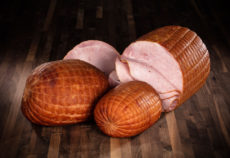


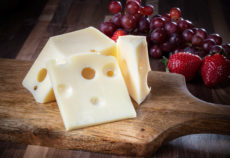
Question;
I’m looking for a sausage type link meat I cooked at New Years Eve, in sauerkraut, which had the consistency of bologna and would split when cooked. What kind of Sausage would that be.
Thank you for your help;
I recently got frozen brazilian sausage. chopped in pieces and tossed in a cast iron pot. It start to relive a smell I cannot understand; the meat is really red and smell like lemon and chemicals… non of the spices I know. the odor is also not understandable. What can it be? Did not eat it, just went into trash.
I was in Chicago recently and ordered eggs and sausage. The sausage was much larger around than the pork sausage i get in Cincinnati. I was wondering what kind it was and could not discern it from what is shown here. Any ideas”
How long will unopened, sealed summer sausage last in the refrigerator?